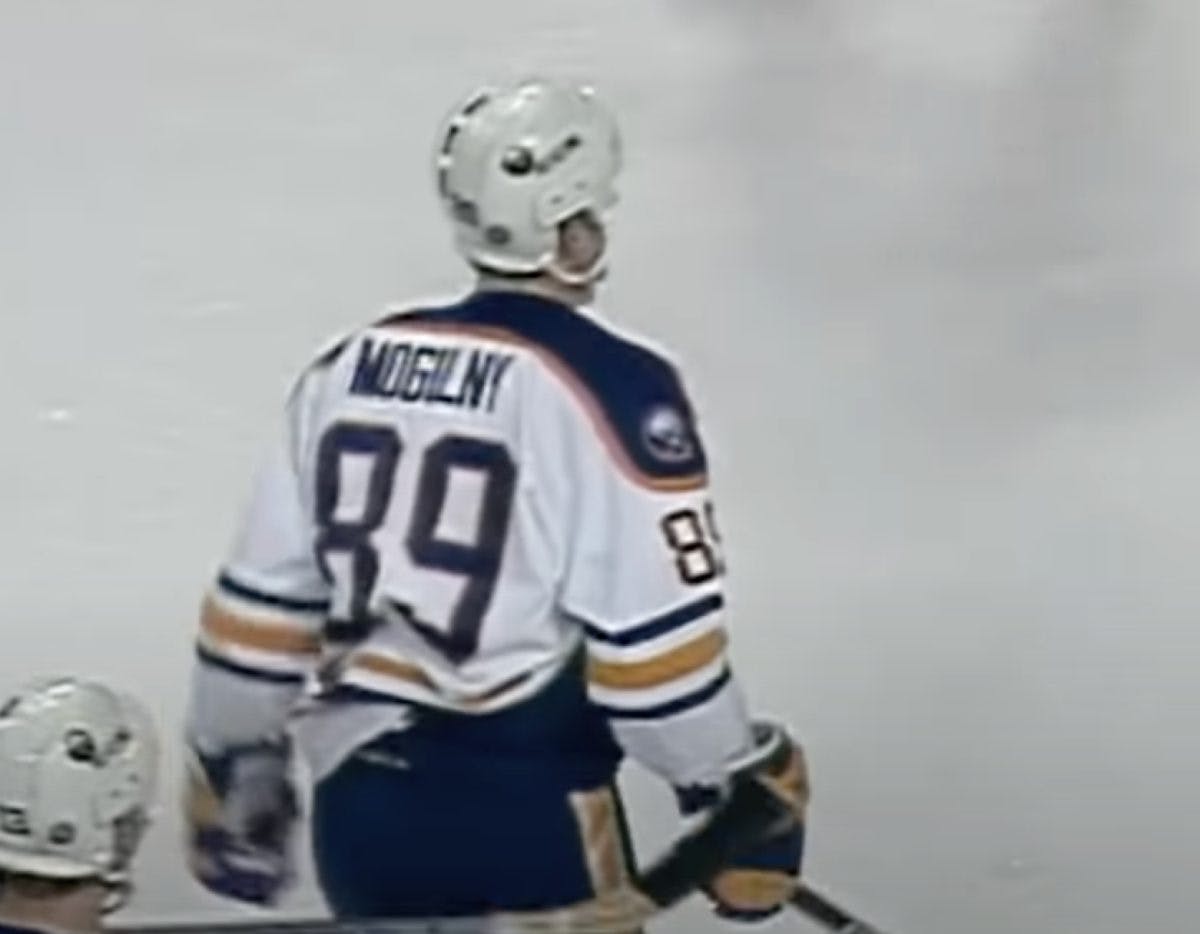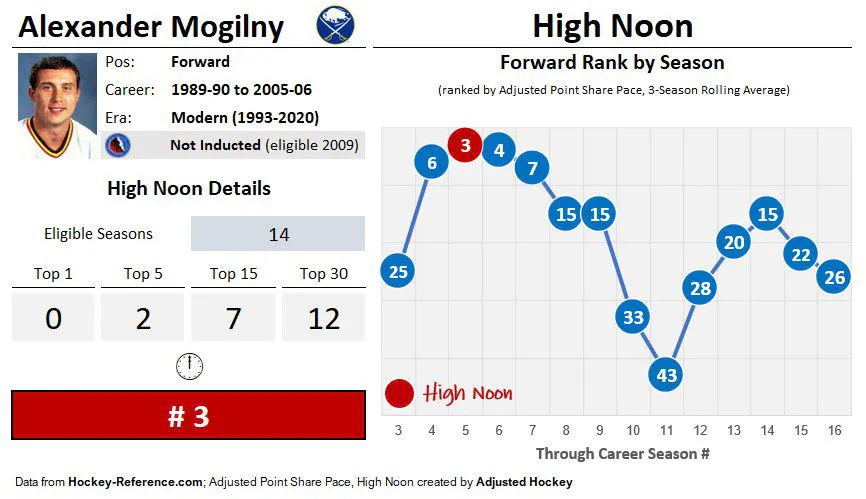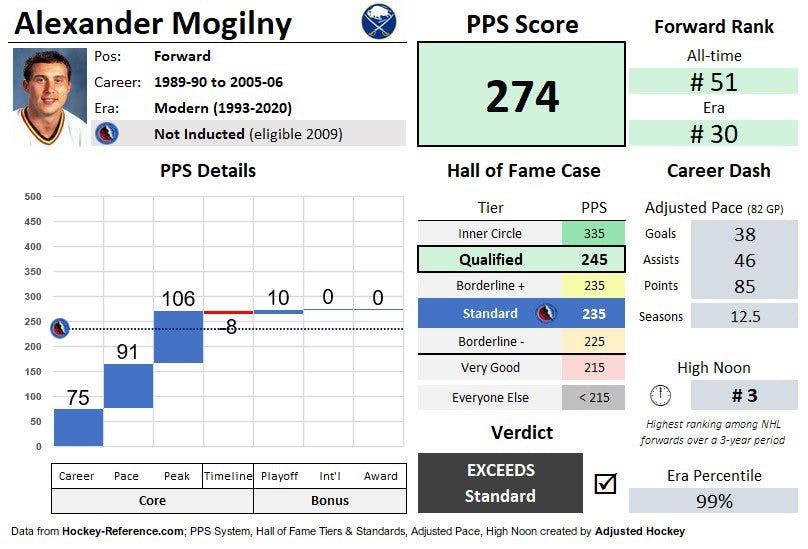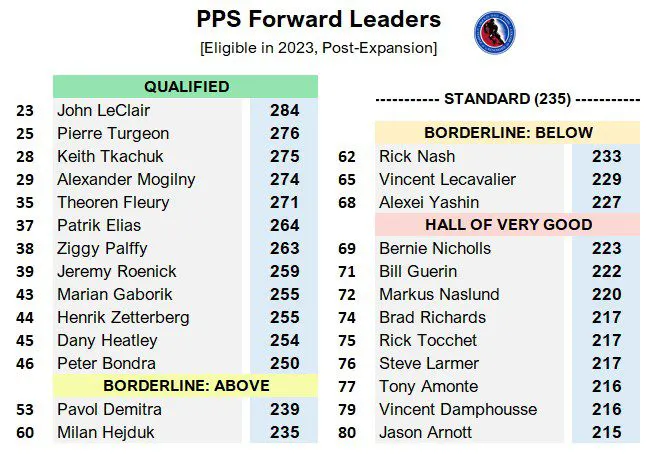Who is the Hockey Hall of Fame’s most glaring omission?

On the lead up to the Hockey Hall of Fame’s announcement of the 2023 Class on Wednesday, June 21, we’ll be profiling eight hopeful candidates. Each player profile will help answer a hard-hitting question about the HHOF and what membership to the game’s most exclusive honor should look like.
Every hockey fan has that one player. A personal cause they feel is a Hall of Fame injustice. Snub. Omission. Oversight. Eight months into talking all things HHOF, I’ve heard the case for every possible candidate. These pitches are an important part of what makes HHOF debates both timeless and fun.
With 293 players, 113 builders, and 16 referees enshrined, plus an average of 5.7 inductees over the last 10 classes, the HHOF has few true blatant exclusions today. At least not in the male player category. If anything, the common criticism is that the Hall has been too generous in issuing hockey immortality.
But what if there was a candidate that checked all the boxes? A candidate with an extreme version of a well-rounded case, both on and off the ice. Our eighth and final profile in the series explores the title of the most glaring HHOF oversight, featuring Alexander Mogilny.
The Narratives 🎙️
- Big Proponent: “One of six players with a 76-goal season, a winner at every level, a limitless talent, and a pioneer whose daring defection changed hockey, Mogilny remains the HHOF’s most flagrant oversight.”
- Big Opponent: “A frustrating and inconsistent scorer that peaked early and couldn’t stay healthy, the often dismissive Mogilny doesn’t warrant inclusion in hockey’s most prestigious club.”
The Stats 💻
- NHL Career (1989-2005): 16 seasons — Buffalo, Vancouver, New Jersey (x2), Toronto

The High Noon Card 🕛
High Noon rankings are the equivalent of the world golf or tennis rankings — only for hockey. A player’s High Noon answers the question: “Where did they rank at their best in the NHL at their position?”

While it took “Alexander the Great” a year to blossom after his landmark defection, he quickly took Buffalo by storm. Mogilny’s fourth season was a masterpiece (76 goals, 127 points), combining with center Pat LaFontaine to torch the NHL. That 1992-93 season was a scorer’s paradise with 21 players hitting 100+ points. But having missed seven games, Mogilny’s signature year holds up — adjusted for era, only six players have scored goals at a better pace, minimum 70 games. Whether it was enough to distract from the Bills’ fourth straight Super Bowl loss remains to be seen. Okay, okay, it wasn’t.
So, was Alexander truly great? Irrefutably, yes. Not only did his High Noon reach #3 in the NHL, he stayed in the top 15 for six straight years. Physically gifted with a brilliant mind, Mogilny evolved as injuries mounted over his career. As part of his second act, he won his only Cup title with New Jersey, then scored at an adjusted 99-point pace at age-33 under the Maple Leaf microscope. He’d rise back up to the league’s #15 forward. All said, he scored at an era-adjusted 30-goal pace a dozen times, including three 50-goal paces.
The PPS Card 📊
The Pidutti Point Share (PPS) system measures a player’s HHOF worthiness in a single comprehensive number. A player’s PPS score is tiered based on the HHOF standard for their position and era.

Mogilny’s PPS score of 274 shreds the benchmark of 235. Here are his core rankings among the 61 post-expansion HHOF forwards:
- Career score (33rd): tied with Sabres legend Gilbert Perreault, his score is average.
- Pace score (11th): stunningly, he’s tied with Guy Lafleur and Marcel Dionne. Despite chronic injuries and many changes of address, Mogilny’s ranking is a testament to the high level of play he sustained.
- Peak score (19th): another collar-popping mark, his best seven-year run outperforms former junior linemate and Hart winner, Sergei Fedorov, and 43 other modern HHOF forwards.
Next, the bonuses. While the numbers scream upper echelon, Mogilny earned MVP votes only once. Why? His career is a perfect storm of seasons abbreviated by injury and played in the shadows of Lafontaine, Pavel Bure, and to a lesser extent, Patrik Elias and Mats Sundin. In the post-season, Mogilny contributed just seven points to the Devils’ 2000 title run, but was impactful on their stymied repeat attempt (16 points).
Internationally, Mogilny is one of 12 players in the Quadruple Gold Club — a Stanley Cup, plus gold medals in the World Juniors, World Championship and Olympics. In PPS, his bonus is nil, a wrinkle in the system as junior hockey is not factored and his senior golds were not best-on-best. In truth, with his defection and decorated international career before it, Mogilny deserves the +10 bonus.
The Comparisons 🧬
Who a player profiles most similarly to statistically is revealing as it removes any influence from reputation or playing style. Using career length, adjusted scoring, and the core factors of PPS, a player’s top five matches are presented. 1,000 is a perfect match.

Statistically, we see two HHOF players as his top matches, followed by two unelected contemporaries, and one active uber-rat in Marchand. It’s intriguing to see Mogilny’s running mate LaFontaine rate slightly behind.
But in terms of career arc, it’s Kariya we’re interested in. Their HHOF cases are uncanny, both by the numbers and basic facts. Each was a speed demon that played 12.5 adjusted seasons, had dominant peaks, battled serious injuries, and played with superstars at their best (Teemu Selanne in Kariya’s case). While there was certainly more on the line in Mogilny’s defection, Kariya was the NHL’s first superstar of Asian descent — both trailblazers in their own way. In retirement, each has lived a quiet life, Kariya disappearing into civilian life at the beach, and Mogilny an executive in the KHL.
Yet, while Kariya waited four years for induction, Mogilny is nearing 13 years. It’s almost as if one was a beloved, undersized Canadian that became the face of a Disney-owned franchise, and the other a European asylum seeker predictably labelled “enigmatic” during and after his career.
The Answer ⚖️
Who is the Hockey Hall of Fame’s most glaring omission?
By the numbers, Mogilny’s case is airtight. The commonly cited argument is that only Wayne Gretzky, Brett Hull, and Mario Lemieux topped his 76-goal season. While that’s true, Mogilny doesn’t need to be the answer to a trivia question to be HHOF-worthy. In a neutral environment, he’s an 85-point player over his full career. No one else passed over for election is within 4 points per season of Mogilny’s pace. He’s the only adjusted point-per-game player with 700+ NHL games rejected by the Hall. For context, Darryl Sittler is a 70-point player in a career of comparable length when adjusting for era. Not close to Mogilny’s offensive stratosphere.
But is Mogilny the BEST candidate outside the HHOF?
Here’s the first complete look at the eligible forward leaderboard in PPS. There’s so much more to unpack beyond Mogilny’s ranking, but it’s a fun list. The 14 players on the left exceed the standard, meaning they are objectively more qualified than 14 of the 61 post-expansion HHOF forwards.

Of course, this is only a starting point. There’s more to a HHOF case than statistics, team success, and award votes. Off-ice impact matters too. But if Mogilny’s on-ice feats aren’t somehow enough, we’ve only briefly mentioned his greatest triumph. Mogilny risked his life to defect to North America in 1989. Accepting the inevitable label of traitor and the repercussions on his family and future, he escaped the KGB and fled to America with Sabres’ management. By doing so, he opened the floodgates for Eastern European talent to the NHL. This immeasurable act alone surely bumps him to top of the list.
In 2018, the Selection Committee elected surprise choices in Soviet star Alexander Yakushev 35 years after he retired, as well as Czechoslavakian pioneer Václav Nedomanský in 2019. So, it clearly has an appetite to reward European trailblazers. There is no player outside the HHOF more aptly labelled a trailblazer than Mogilny.
Sure, it’s possible he may not attend his induction. Yes, he was private, and rarely warm and fuzzy. But consider his path to the NHL. He grows up in a bleak, oppressive society. He’s forced into 11-month-per-year, military-style hockey training as a teen. He speaks no English and is transplanted in a foreign land. He’s exposed to immediate pressures as a 20-year-old with no family or friends. He scores 1,000 points in the league, becomes a captain, wins a Lady Byng for gentlemanly conduct, grinds to the end with chronic injuries until he’s 37. And 17 years later, the HHOF is still debating whether his qualifications or personality are fit for an honor he’s at least a decade late to receive. Somewhere, the plot’s been lost with Mogilny. It’s long overdue to rewrite the script.
The Verdict 🚦
While Russia’s abhorrent and fascist war on Ukraine continues, the IIHF maintains its ban on the country’s participation in international events. If the HHOF came out and said they were going to pause on electing Russians — irrespective of their personal beliefs — no one would blink an eye. But absent such a statement and without any insight on Mogilny’s world views, he’s up for selection as he has been every year since 2009.
Given both the statistical evidence and groundbreaking influence, Mogilny is the most pressing male player case for induction. With mounting public pressure, the temperature to elect him continues to rise. Whether or not he’s interested in the formal celebration, he’s earned the right to be acknowledged as an all-time talent that left an indelible mark on the sport.
Catch up on the series by @AdjustedHockey:
- Should six outstanding seasons get a player into the Hockey Hall of Fame? Featuring John LeClair
- Do post-playing careers affect our view of HHOF cases? Featuring Rod Brind’Amour
- How important should team playoff success be to a Hockey Hall of Fame case? Featuring Henrik Zetterberg
- Why is the Hockey Hall of Fame so tough on goaltenders? Featuring Curtis Joseph
- Why has the Hockey Hall of Fame been so slow to elect qualified women? Featuring Jennifer Botterill
- Has the Hockey Hall of Fame overlooked a generation? Featuring Sergei Gonchar
- Should the HHOF elect individuals for being part of the sport’s signature moments? Featuring Paul Henderson
Adjusted Pace, High Noon, PPS System, High Noon & PPS Player Cards, Player Comparison Tool from Adjusted Hockey; All other data from Hockey-Reference.com
More from Paul Pidutti
- Father Time 2025: Are McDavid, Binnington and others on the decline?
- Surprise: great players rarely make great NHL coaches
- Overtime, loser points unleashing chaos in NHL’s Season of Parity
- Projecting the 2026 Hall of Fame Class: Bergeron, Price and endless possibilities
- Hall of Fame tiers: Which NHL stars are destined for immortality?